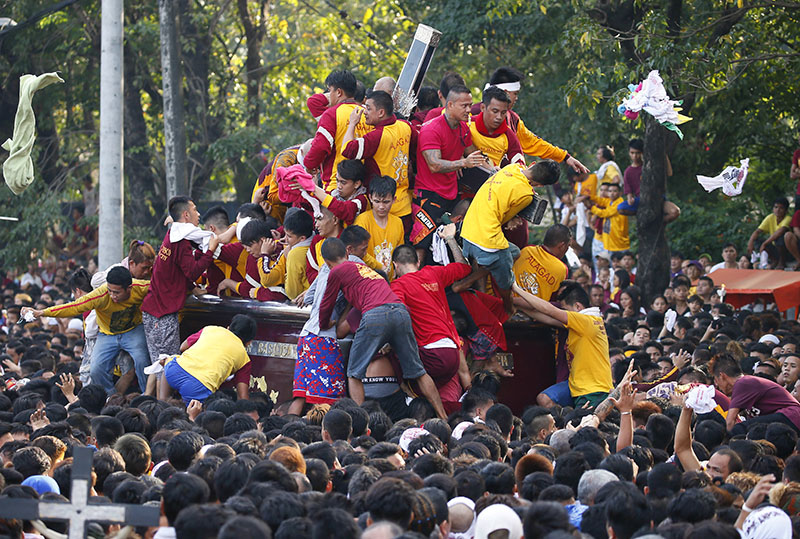Huge Catholic procession held under heavy security in Manila
MANILA: A massive crowd of mostly barefoot Filipino Roman Catholic devotees on Monday joined an annual procession of a centuries-old statue of Jesus Christ held under tight security due to fears of a possible attack following the killing of a suspected Islamic extremist leader.
The US and British embassies asked their citizens to take precautions, and the police warned that local Muslim militants trying to align themselves with the Islamic State group may try to attack the procession of the wooden Black Nazarene with a cross along Manila's streets.
National police chief Ronald Dela Rosa says authorities have not monitored any specific threat but warned that followers of a Muslim extremist leader killed in a clash with police last week may retaliate by attacking the procession.
Mohammad Jaafar Maguid, leader of a small but violent Islamic group called Ansar Al Khilafah Philippines, died in a gunbattle Thursday in Sarangani province in the country's south. Three of his companions were captured.
On Saturday, a suspect linked to Maguid's group and a Filipina were killed when they allegedly tried to lob a grenade at policemen Saturday to evade arrest in Sarangani.
Maguid's group has been linked to a failed plot to bomb Rizal Park and the nearby US Embassy in Manila in November.
Authorities have imposed a gun ban, prohibited drones and backpacks, and jammed cellphone signals along the vicinity of the procession, which was guarded by thousands of police and troops.
Despite the fears and heavy security, police said about 470,000 people gathered overnight to be able to touch the lifesize statue at the Rizal Park then joined the start of the raucous procession at daybreak. It was not possible to confirm the crowd estimate.
Devotees jostled around a carriage carrying the statue and threw small towels at volunteers on the carriage to wipe parts of the cross and the statue in the belief that the Nazarene's mystical powers to cure ailments and provide good health and fortune will rub off on them.
Benjamin Tayzon, a 64-year-old businessman, brought some of his children and grandchildren, to one of Asia's largest religious gatherings, although he lost two toes in 1990 when the wheels of the carriage carrying the Black Nazarene ran over his left foot. The accident, he said, may have been God's way of telling him that he has committed too many sins.
"It's a remembrance, like a tattoo that can never be erased," Tayzon told The Associated Press as he walked barefoot, carrying a small replica of the statue on his head.
The lifesize statue, crowned with thorns and bearing a cross, is believed to have been brought from Mexico to Manila on a galleon in 1606 by Spanish missionaries. The ship that carried it caught fire, but the charred statue survived. Some believe the statue's survival from fires and earthquakes through the centuries, and intense bombings during World War II, is a testament to its mystical powers.
The spectacle reflects the country's unique brand of Catholicism, which includes folk superstitions, in Asia's largest Catholic nation. Dozens of Filipinos have themselves nailed to crosses on Good Friday in another tradition to emulate Christ's suffering that draws huge crowds each year.






